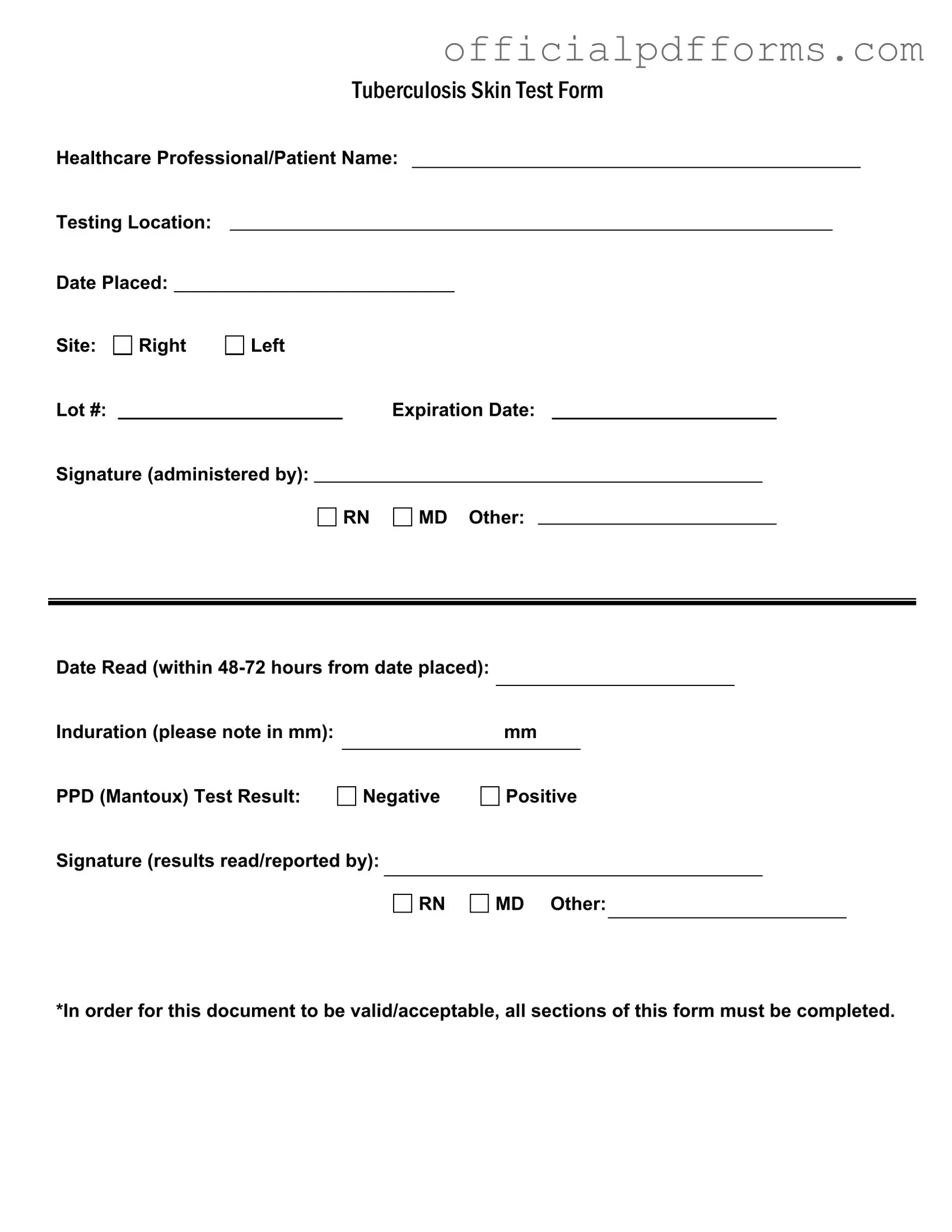The TB Test form is used to document the administration and results of the Tuberculosis (TB) skin test, also known as the PPD (Purified Protein Derivative) test. This form serves as an official record for healthcare providers and patients, ensuring that all necessary information is captured for accurate evaluation of TB exposure.
Who can administer the TB Test?
The TB Test can be administered by qualified healthcare professionals, including Registered Nurses (RNs) and Medical Doctors (MDs). The form requires the signature of the person who administered the test to validate the procedure.
To ensure the form is valid, all sections must be completed. Required information includes:
-
Healthcare Professional/Patient Name
-
Testing Location
-
Date Placed
-
Site of administration (Right or Left arm)
-
Lot number and expiration date of the PPD
-
Signature of the administering professional
-
Date Read (within 48-72 hours)
-
Induration measurement in mm
-
Test result (Negative or Positive)
-
Signature of the professional who read the results
How soon should the test results be read?
The results of the TB skin test should be read within 48 to 72 hours after the test is administered. It is crucial to adhere to this time frame to ensure accurate interpretation of the induration measurement.
What does the induration measurement indicate?
Induration refers to the raised, hardened area at the site of the TB test. The measurement is taken in millimeters (mm) and is used to determine the test result. A larger induration may indicate a positive reaction, suggesting potential exposure to TB. However, the interpretation can vary based on individual risk factors.
What does a positive TB test result mean?
A positive TB test result indicates that the individual has been exposed to the bacteria that cause tuberculosis. This does not necessarily mean the person has active TB disease. Further evaluation, including a chest X-ray or additional tests, may be required to determine if the infection is latent or active.
What should I do if my test result is negative?
A negative TB test result generally indicates that there has been no exposure to the TB bacteria. However, if you have symptoms of TB or have been in close contact with someone who has active TB, consult your healthcare provider for further assessment and possible follow-up testing.
Is there a need for follow-up testing?
Follow-up testing may be necessary depending on the initial test results and individual risk factors. If the test is positive, further diagnostic procedures will be needed. For individuals at high risk or with previous positive results, periodic testing may also be recommended. Always discuss your specific situation with a healthcare professional.
